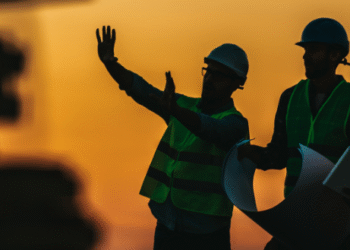Is the complexity of building a fully functioning digital twin being undersold in the construction industry?
Digital twins have become a focus in construction in the past few years, with increasing numbers of contractors, consultants and developers discussing their digital twin for a new build, and the benefits it brings. Without doubt the technology is getting a lot of attention and it is easy to see why.
A digital twin, done well, will provide real-time information on an asset – for instance a building or set of buildings, allowing the operator to better understand how those assets within it are running, better implement a predictive maintenance approach and in theory, alter the way some services in the building run.
As measure to reduce carbon emissions becomes more pressing, digital twins will help operational efficiency, especially in larger spaces and tall buildings. For larger assets, the investment community will become demanding around digital twin use as they will want to ensure the lifecycle and profitability is maximised.
But two recent discussions with different sets of industry professionals have highlighted that the path of a successful digital twin is far from smooth. In asking those professionals for examples in the Middle East of a fully functioning digital twin, few were put forward, with only ICD Brookfield in Dubai flagged by both groups. There are though, many being built and it is clear that in some cases, a more cautious pilot study approach is being taken. Having seen many case studies on digital twins, it leads to the question, why are industry professionals beginning to raise red flags on the technology?
The challenge centres on the definition of a digital twin, with several industry experts stating that it is just too loose, allowing different organisations to apply differing definitions of what constitutes a digital twin. It needs to almost go back to the beginning, they suggested, so that people can understand what a digital twin is (and is not) and the promise they hold.
Thinking about these comments, the most obvious challenge is around definition. If professionals from the digital construction space are arguing that this has not been nailed down, perhaps it is time to do just that. Bring together a group of respected industry professionals representing different roles and disciplines, and produce the starter kit for a digital twin.
Make sure there is a clear description and definition, introduce clarity around the complexity and describe the integration required between different digital technologies to ensure a fully functioning twin can be built. Far from being an out-of-the-box software solution, a digital twin involves many parts that have to be properly integrated, in particular the live data, and standards that must be complied with.
Digital twins is one of the hottest topics in construction technology. Without doubt, there will be some interesting use-cases in the coming 12 or so months. But what is clear from talking with different groups of industry experts is that now is the time to ensure the basics are in place for the technology to shine in future.















